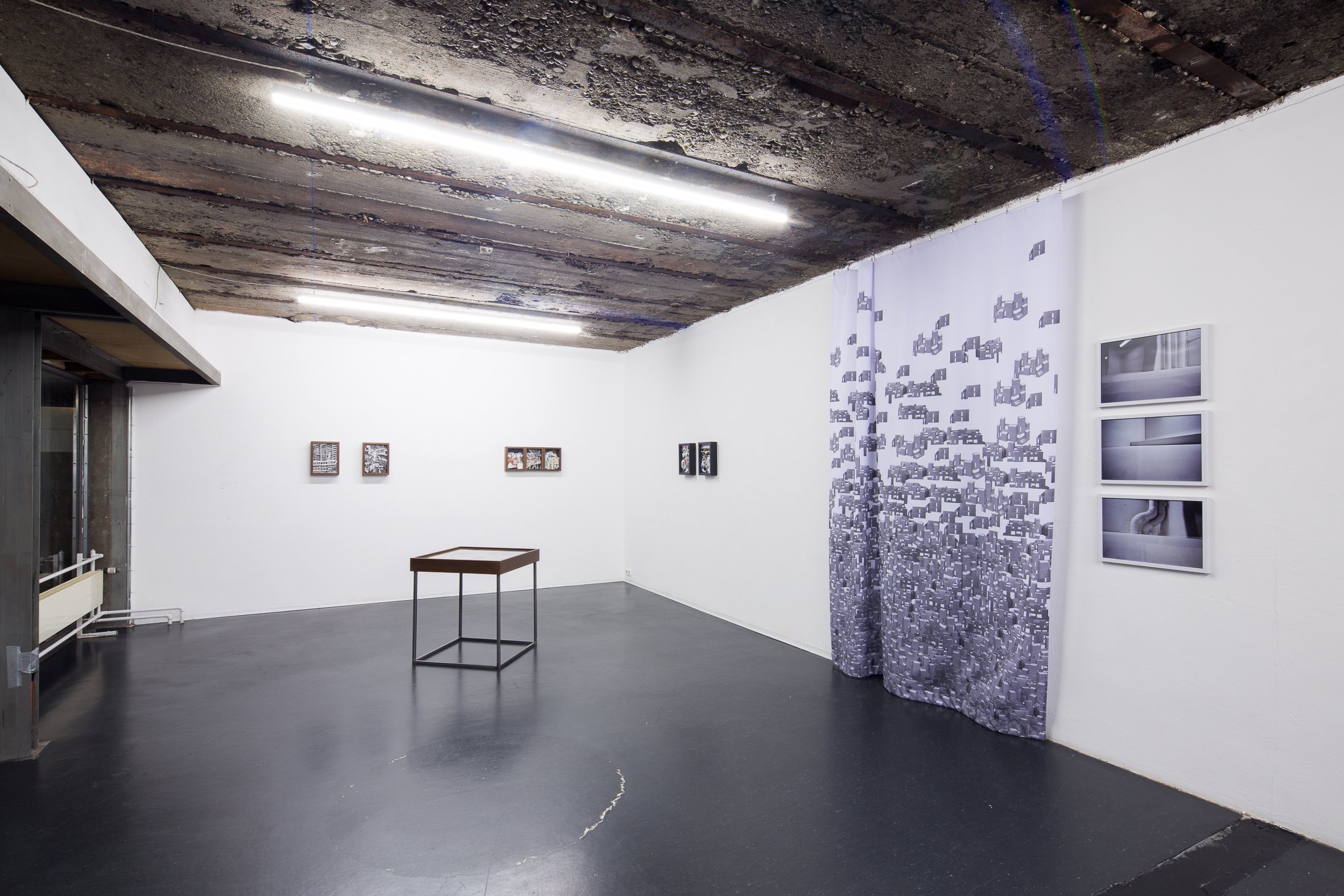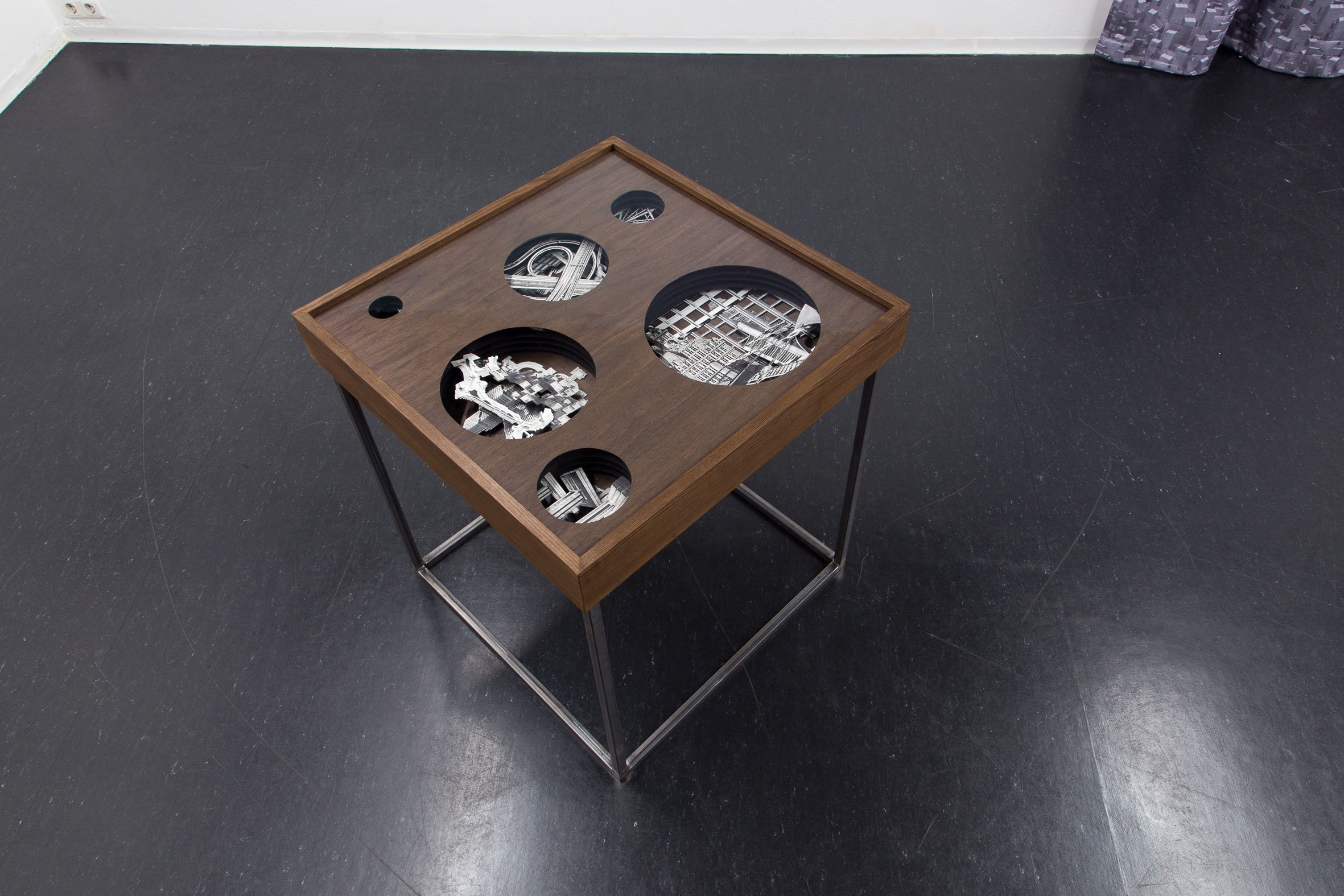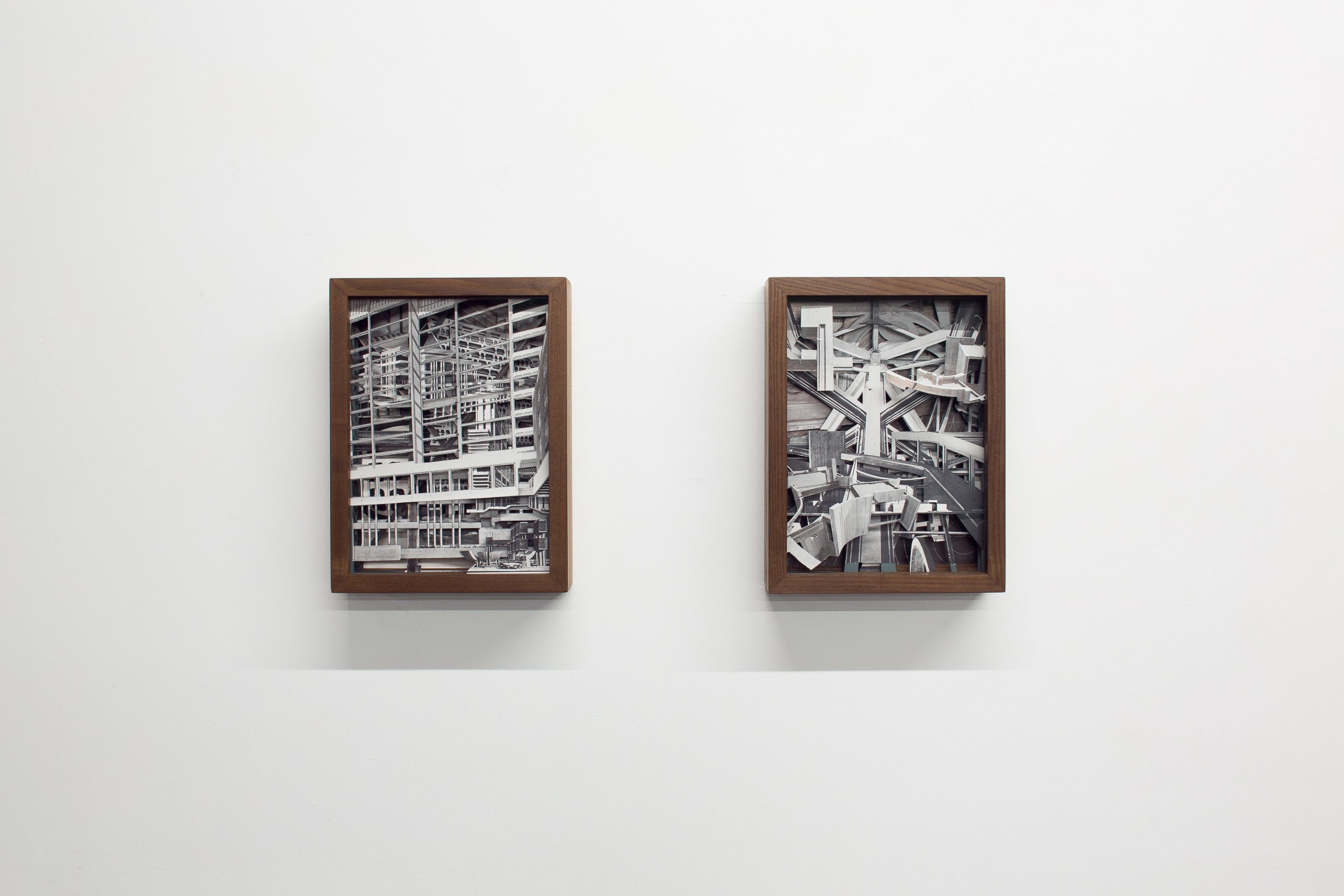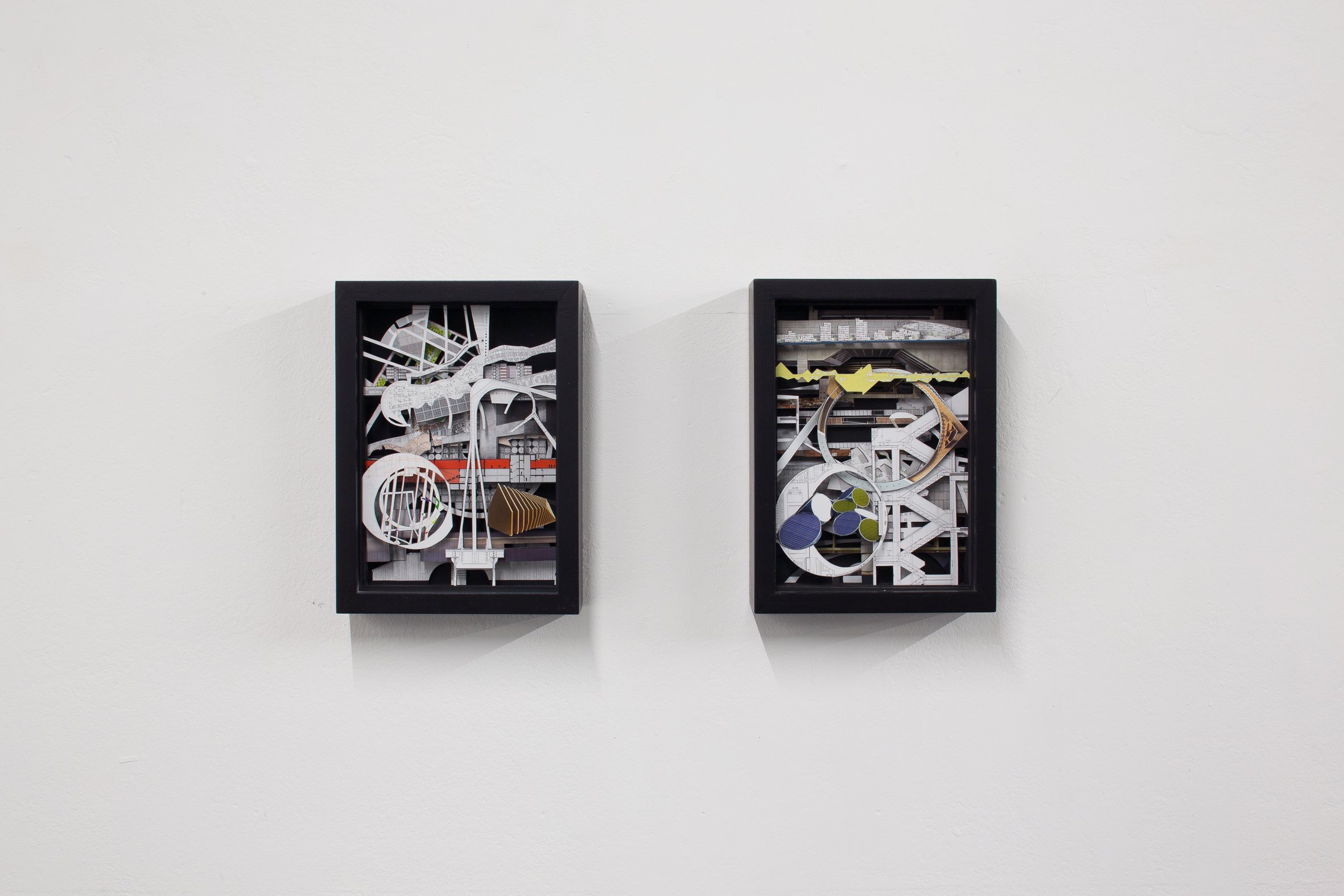Der nachgebildete Blick / The replicated gaze
23.04. 2013 -01.06. 2013, das weisse haus, Vienna
Sending the imagination on a journey. Triggering longing through titles that refer to a beyond the space of experience and reference in which one moves. To open up a horizon that relates the half-conscious, the semi-conscious to an imaginary or better: hysterically hallucinatory. "Social housing in Pais Vasco (Alava, Bizkaia, Gipuzkoa)" is the name of a group of paper collages from the series "Baumeister". They are palimpsests, overwritings of architectural ideas that have concretised themselves as project sketches in architectural journals and, as outlines, become morphemes of a visual grammar with which Claudia Larcher meta-constructivistically misses and reconfigures urban space and its furnishing/management by the agencies of the administration of the community. Expressionist slants - with reference to Lotte Eisner, one could speak of demonic architectures - , endlessly woven ribbons of urban highways, facades collapsing into one another. While the - architecture-critical? psychogeographical? post-psychedelic-traumatic? - films, for which Claudia Larcher has become famous, unfold on a timeline and colonise the (sub)consciousness very slowly and insistently, in the collages everything falls into one, as if viewed through a prism: The highest condensation of the gaze, urban utopias formulated as two-dimensional designs, here vaulted into the three-dimensional dystopian. Retrofuturistic relief structures that recombine materialities and bold formal languages in an almost fetishistic way. Re-make, re-model with the intention of enjoying the beauty of bricolage and at the same time subverting the urban imperatives that run along as subtext.
In the artist's walking image works, one embarks on a journey into the heart of darkness, where, as in "Empty Rooms", meticulously scanned surface textures suddenly burst into abysses of contingency, endless corridors of traumatic self-loss; Where beneath the supposed ontological stability produced by calculable spatial relations a maw of the unspeakable opens up, in the works of the "Baumeister" series one experiences a productive shock of suddenness/immanence. An allover of the most diverse forms, colours and figurations, a post-cubist distortion of the gaze with simultaneous recalibration of the visual with regard to details, incongruities of scale and impossibilities of perspective.
"Strategies against Architectures" is the title of a record by the German industrial band Einstürzende Neubauten. A programme that can also apply to Claudia Larcher's work. Perhaps supplemented by the addition that it is not only about opposing architectures as dispositives of power representation or social control, but about thinking with and through architectures, possibilities and deficits of the social. The "inhospitableness of our cities" diagnosed by Alexander Mitscherlich is denoted and at the same time transcended as a mythopoetic cataclysm of architectural multiplicities. In the series of works "Arakawa-Ku", which was created on the occasion of the artist's stay in Japan, Claudia Larcher takes a different, almost contradictory path: in a mental visual connection to the emblematic architectural photography of Bernd and Hilla Becher, single-family houses in a district on the outskirts of Tokyo are isolated from the urban environment and exhibited in their design bizarreness, which is often due to the spatial constriction. Individual irregularities, for example in the arrangement of the windows and the colour scheme of the façades, seem to contradict the law of the serial and yet, as individual quirks, become symptoms of a collective unease. The video "Die Einzige und ihr Eigenheim" (The Only One and Her Home) shows such architectural (dis)wills as building kits with which one can realise the respective architectural idiosyncrasy as a micro-mundus. The world in a nutshell, so to speak, Legoland reloaded, the non-place as the zone of an energetic charge with a desire that seeks its salvation in a game of differences and yet is always referred back to its own inability. Claudia Larcher balances on that ridge where the home as a refuge, as a dividing line to the incomprehensible world outside can tip over into the uncanny at any time, where the feeling of homelessness spreads in the house.
In the artist's works, the inside often becomes the outside and the outside becomes a space that can no longer be mapped, beyond signs, metaphor and paranoid delusion. And yet, in these deserted, aesthetic territories, in this productively jumbled order of things, there is still the hope that each person might find a counterpart in their night. That in recognising and conjuring up the enigmatic signs and incunabula that organising being produces, there would be the possibility of a communicative exchange. "Wherever the hieroglyph of some spatial image is deciphered," writes Siegfried Kracauer, "there the ground of social reality presents itself." (Text by Thomas Miessgang)










